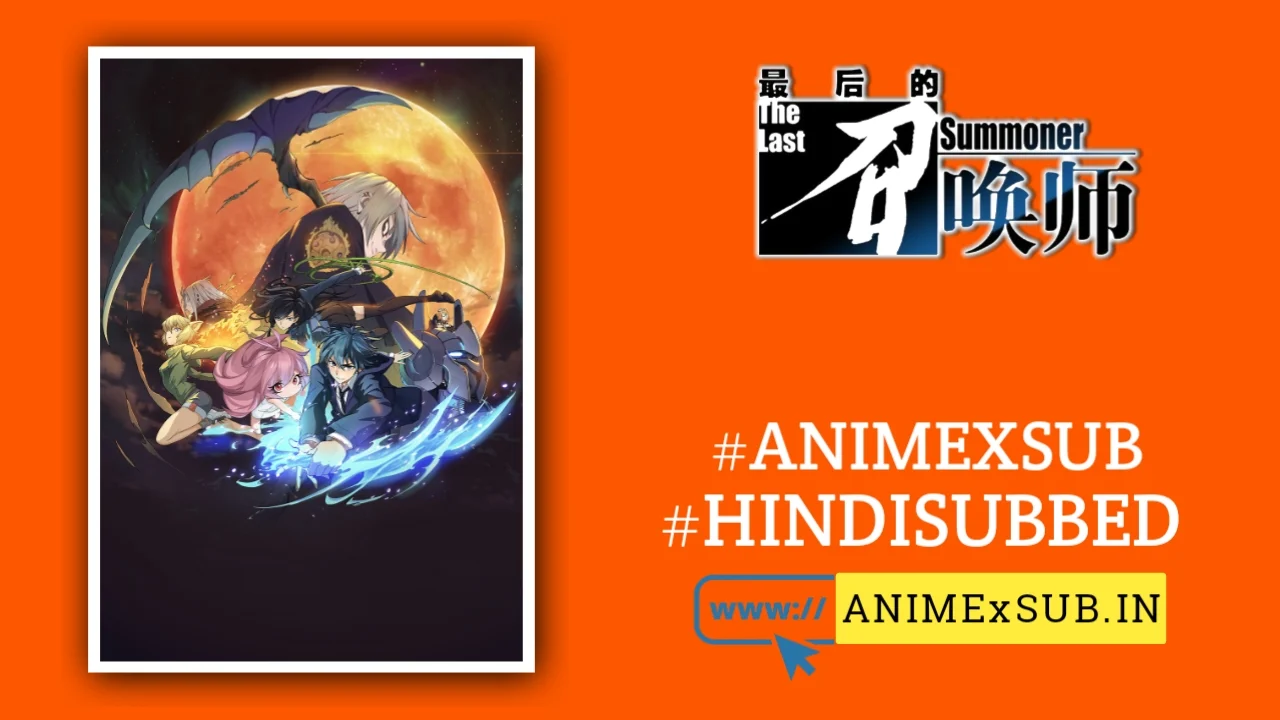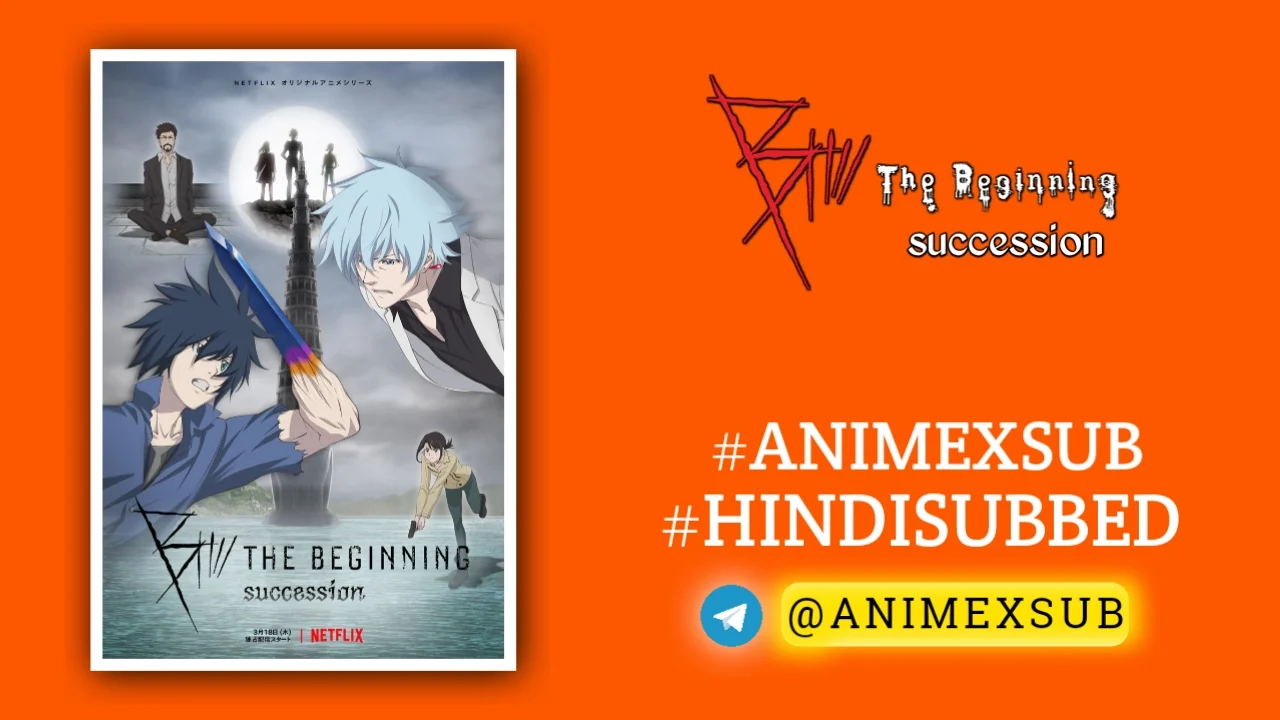
The Water Magician Hindi Subbed [08/12] | Mizu Zokusei no Mahou Tsukai Hindi Sub

Mizu Zokusei no Mahou Tsukai
The Water MagicianSynopsis
Ryou is delighted to be reincarnated into the fantastical world of Phi, where he thinks he’ll get to live a quiet life learning to use his newfound water magic. Going with the flow here, however, means something very different. Ryou is immediately pitted against the wild lands he winds up in and the slew of deadly monsters that call the remote subcontinent home. You’d think he’d forget about taking it easy when he’s stuck fighting for his life, but lucky for Ryou, he’s naturally optimistic, clever, and blessed with the hidden “Eternal Youth” trait. Twenty years pass in the blink of an eye, and each encounter along the way pushes him one step closer to the pinnacle of human magic. Little does he realize that’s only the opening chapter of his tale. A fateful meeting soon thrusts Ryou to the forefront of history, forever changing the course of his life... Thus begins the adventures of the strongest water magician the world has ever seen—who also likes to do things at his own pace! (Source: J-Novel Club)
Watch Trailer
Characters
Episodes
Eternal Youth in a Savage Realm: The Reincarnation of Ryo Mihara
In the shadowed fringes of the fantasy world Phi, where ancient forests whisper secrets to the wind and untamed waters carve paths through unyielding stone, Ryo Mihara awakens to a destiny far removed from the mundane salaryman life he left behind in modern Japan. At the tender age of twenty, his earthly existence ends abruptly, only to rebirth him into this enchanted subcontinent—a land teeming with ferocious beasts and arcane energies that demand constant vigilance. Blessed—or perhaps cursed—with the affinity for water magic and the enigmatic trait of eternal youth, Ryo’s initial aspiration for serene solitude crumbles under the weight of survival’s relentless tide. This opening act of his saga, spanning the first season’s twelve episodes, unfolds as a meticulous chronicle of isolation and self-mastery, where every droplet of conjured water becomes a tool for defiance against the wilderness’s primal fury. Unlike the hurried power escalations in typical isekai narratives, Ryo’s journey emphasizes a deliberate, almost meditative progression: from rudimentary spells that summon mere cups of liquid to intricate manipulations of temperature, pressure, and form that evolve into barriers, blades, and healing elixirs. Over the implied two decades compressed into visual montages, his body remains forever youthful, a stark contrast to the scars of experience etched into his psyche, allowing viewers to witness a transformation that feels profoundly internal rather than superficially triumphant.
Ripples of Alliance: The Castaway Knight and the Dawn of Companionship
As Ryo’s solitary dominion over his modest shack—fortified by magical wards against nocturnal predators—begins to feel like an eternal loop, the sea delivers an unexpected catalyst in the form of Abel, the battle-hardened captain of the Crimson Blade adventuring party. Washed ashore amid debris from a cataclysmic storm, Abel’s arrival in episode two marks a pivotal shift from hermitage to interconnection, introducing dynamics of trust and mutual reliance that propel the narrative beyond mere survival. Abel, voiced with a gravelly determination by Kazuki Ura in the Japanese track and Ben Stegmair in the English dub, embodies the archetype of the seasoned warrior whose genius lies not in brute force but in strategic prowess and unyielding loyalty. Their initial collaboration, healing Abel’s wounds with purified water infusions and sharing tales of distant realms, reveals Ryo’s latent optimism—a trait that tempers his growing power with humility. This bond extends into the broader ensemble: Sera, the enigmatic elf archer whose subtle personality quirks provide rare moments of levity amid escalating threats; Michael, the tactical mind of the group whose analytical gaze uncovers hidden dungeon perils; and Lewin, the elder sage whose arcane knowledge bridges Ryo’s intuitive magic with structured lore. These relationships, forged in the crucible of shared perils like wyvern ambushes and akuma infestations, dissect the theme of isolation’s toll, showing how even an eternally youthful magician craves the chaos of camaraderie to truly evolve.
Fluid Mastery Unleashed: Arcane Depths and the Symphony of Elemental Combat
At the heart of the season lies the mesmerizing evolution of Ryo’s water magic, a system that transcends conventional elemental tropes by integrating physics, biology, and environmental harmony into every incantation. Episode three’s entry into the town of Lune serves as a gateway to civilized perils, where Ryo registers as an adventurer and confronts his first societal test: a menacing foe in the guild’s underbelly that forces him to improvise a high-pressure water lance from ambient moisture. This escalates in subsequent installments, such as the dungeon delve in episode five, where trouble brews in labyrinthine depths infested with shape-shifting akuma—demonic entities that adapt to conventional attacks. Ryo’s preparations, drawing from twenty years of wilderness experimentation, yield innovative spells like the “Great Tidal Bore,” a cataclysmic wave that not only repels invaders but reshapes terrain, symbolizing water’s dual nature as nurturer and destroyer. The animation by Typhoon Graphics and Wonderland captures these sequences with fluid, almost hypnotic choreography: droplets coalescing into razor-sharp tendrils that slice through armored hides, or vaporizing into mists that obscure and suffocate foes. Yet, this power comes at a nuanced cost—Ryo’s eternal youth prevents physical fatigue, but the psychological burden of one-shotting legendary beasts like colossal boars or dragon-like horrors underscores a subtle critique of unchecked omnipotence, where victories feel hollow without the risk of true vulnerability. By episode seven, as out-of-town visitors exploit the aftermath of tidal upheavals, Ryo’s arsenal expands to include bio-alchemical applications, purifying tainted waters to heal allies or creating osmotic barriers that draw life from enemies, elevating combat into a philosophical ballet of adaptation and flow.
Echoes of the Wild: Atmospheric Soundscapes and Visual Poetry in Isolation
What elevates this season beyond standard fantasy fare is its immersive sensory tapestry, where the untamed beauty of Phi’s wilderness becomes a character in its own right. Director Hideyuki Satake’s vision, supported by character designs from Yūka Kozutsumi, paints Ryo’s remote existence with lush, painterly strokes: verdant canopies pierced by shafts of ethereal light, bioluminescent fungi illuminating nocturnal hunts, and the ceaseless murmur of rivers that mirror Ryo’s introspective solitude. Music by Akira Kosemura and Sayaka Aoki weaves a sonic undercurrent of gentle waves and distant thunder, amplifying the opening theme “Blue Motion” by Meiyo Densetsu—a pulsating track that evokes the thrill of discovery—and the ending “Tayutau Mamani (Sway as You Please)” by Misaki, whose melancholic sway captures the protagonist’s swaying between peace and peril. These elements converge in episode four’s unexpected encounter with a headless horseman apparition, a spectral trial that blends folklore with magical realism, forcing Ryo to manipulate humidity into illusory decoys. Critically, the series’ pacing masterfully balances quiet introspection—Ryo tending fruit groves or meditating by waterfalls—with bursts of intensity, creating a rhythm akin to the ebb and flow of tides. However, this atmospheric purity occasionally stumbles in group dynamics, where supporting characters risk blending into archetypes, their personalities emerging only in fleeting, elf-tinged moments of wit or strategic banter.
Tides of Legacy: Culminating Perils and the Horizon of Uncharted Depths
As the season arcs toward its finale, the convergence of personal growth and external chaos in episodes nine through twelve propels Ryo from reclusive savant to reluctant legend, with the Great Tidal Bore’s lingering repercussions summoning troublesome interlopers—rival mages and shadowy guilds—who view his powers as a threat to established hierarchies. A daring dungeon expedition warps reality itself, introducing temporal anomalies that challenge Ryo’s eternal youth by blurring the lines between past isolations and present alliances, culminating in a multi-phase boss encounter where water magic interfaces with the party’s diverse skills: Abel’s swordplay channeling hydraulic propulsion, Sera’s arrows guided by mist veils. This narrative crescendo dissects themes of destiny’s inevitability, as Ryo’s optimistic cleverness—honed through years of alchemical trials like distilling monster essences into potions—transforms potential tragedies into triumphs of ingenuity. The season’s purity shines in its refusal to glorify power without consequence; Ryo’s overpowered state undermines tension in isolated skirmishes, yet the emotional stakes of protecting newfound bonds infuse depth, echoing philosophical undertones of immortality’s loneliness. In a landscape saturated with isekai clones, The Water Magician Season 1 distinguishes itself through its elemental fidelity and character-driven subtlety, leaving viewers adrift in anticipation of Ryo’s next current—whether it sweeps toward greater societal upheavals or deeper personal revelations in the uncharted seas ahead.1











Kks
??
Bekar site h
Kya hogya bhai, masla toh bolo?